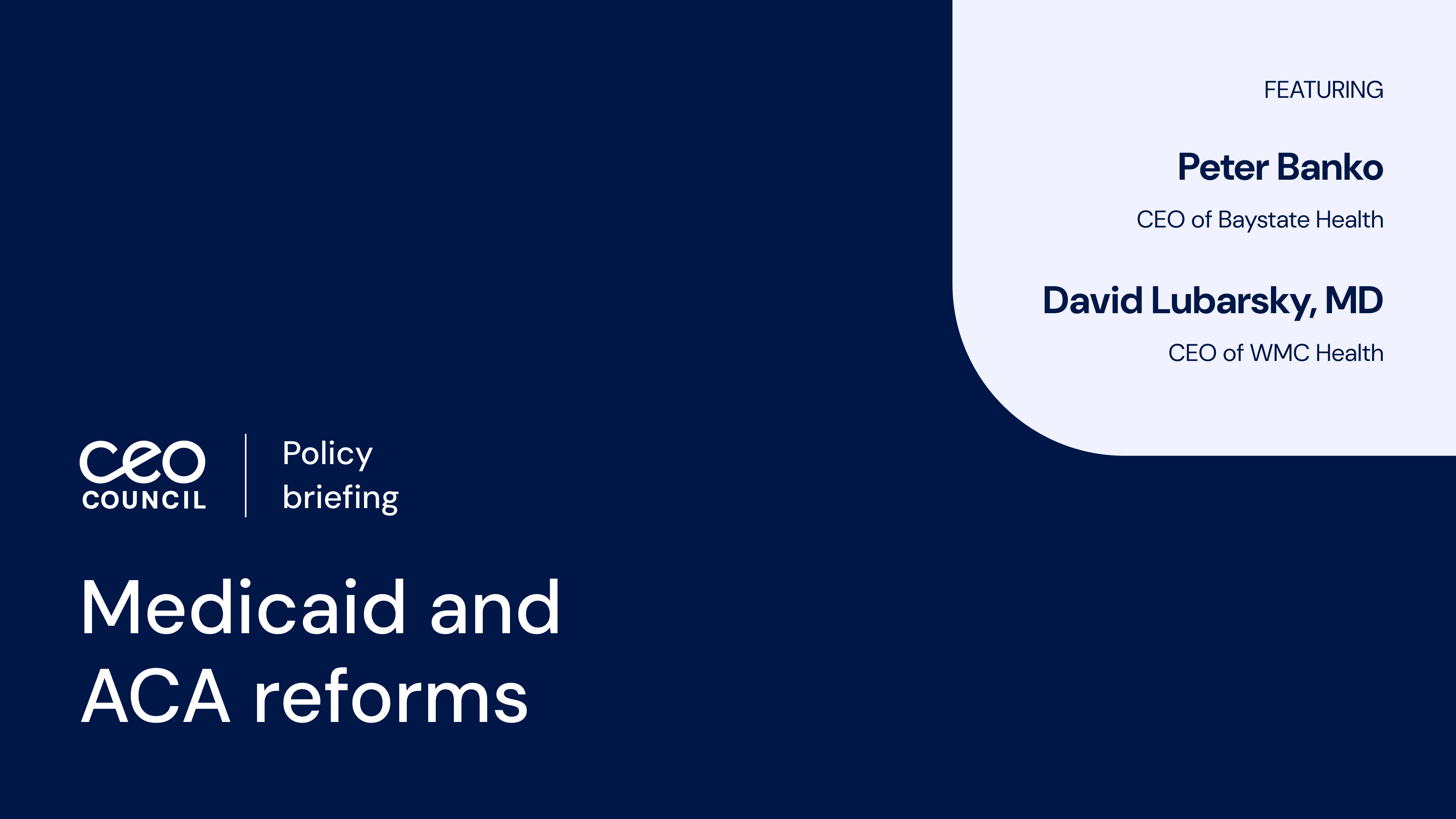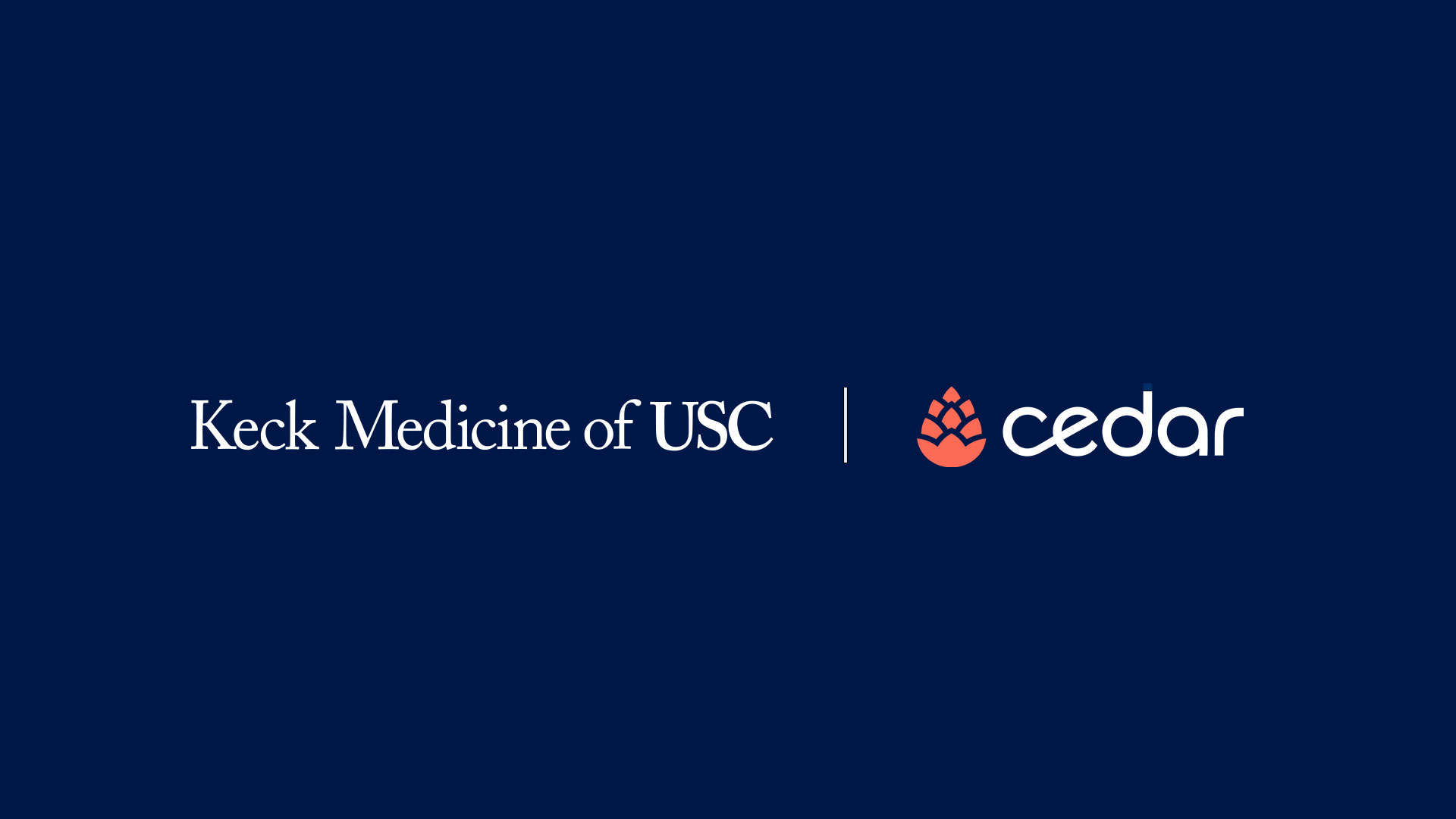Earlier this year, our CEO Florian Otto reflected on the privilege of gathering dozens of healthcare executives at our annual CEO Council in Napa Valley. It was a rare chance for candid dialogue—and a reminder of how meaningful change starts with honest conversations among industry leaders.
That same spirit was present again during a recent policy briefing where Cedar convened more than 20 healthcare CEOs, this time under more urgent circumstances.
The focus: Medicaid and ACA cuts in the One Big Beautiful Bill Act. These changes—ranging from Medicaid work requirements and more frequent redeterminations to reduced retroactive coverage—are projected to strip coverage from 10 million Americans 1 and saddle hospitals with $434 billion in additional uncompensated care 2 over the next decade.
But the most powerful takeaway wasn’t the numbers. It was the growing sense that these reforms are forcing a fundamental shift in how providers operate. This moment is testing how systems built for stability adapt to an era of churn. Health systems can no longer wait for patients to fall through the cracks—they’re being called to build proactive digital safety nets that protect both financial well-being and physical health
That message came through clearly from David Lubarsky, MD, CEO of Westchester Medical Center Health Network (WMC Health), and Peter Banko, CEO of Baystate Health. Both lead systems with large Medicaid populations and uniquely understand the stakes. Here’s what they shared:
1. Uncertainty isn’t an excuse for inaction
The implementation timeline for the cuts is giving many leaders pause. Most major provisions like work requirements take effect over the course of the next few years, and political realities could shift outcomes after midterm elections.
Plus, it’s challenging to forecast the exact impact of the changes, especially as organizations wait to hear more from their states.
“We can’t possibly model it because the New York State Legislature hasn’t even gotten together yet to talk about what they’re doing,” explains Dr. Lubarsky. Banko faces similar uncertainty, projecting a “wide range between 150 and 300 basis point impact” after this year.
Despite this uncertainty, the response isn’t to wait and see, especially for organizations already facing financial pressures. Because waiting for the policy dust to settle means patients lose access, and providers absorb the fallout.
“We’ve had some financial challenges before my arrival, so keeping financial stability is going to be important for us,” says Banko. “We’re trying to get ahead of that and accelerate some of our moves this next year.”
Peter Banko on modeling the financial impact of the Medicaid cuts
2. The financial fallout is already starting
While many of the policy changes won’t take effect immediately, others could create near-term financial pressures for health systems.
One example is the expiration of enhanced ACA subsidies this December. Without Congressional action, marketplace plan premium payments are expected to increase by 75% on average,3 impacting both low- and middle-income households. In response, many patients may shift to Bronze plans that offer lower monthly costs but carry high deductibles when care is needed.
In some cases, that shift is intentional. But in others, patients who qualify for subsidized Silver plans with more manageable deductibles aren’t being made aware of these options during enrollment. Instead, they default to Bronze coverage, assuming it’s the most affordable choice.
“The definition of large deductible plans is essentially bad debt,” says Dr. Lubarsky. “So bad debt will go up.”
Provider tax restrictions present another immediate challenge because they reduce states’ ability to leverage federal matching funds that supplement Medicaid payments.
Specifically, safe harbor limits for these taxes will be reduced by 0.5% annually until reaching 3.5% in 2032, lowering the funding states can collect from providers.4 Based on Massachusetts’ current rate, Banko notes that while some say payments will largely stay flat over this period, “uncompensated care is going to go up dramatically—so there’s going to be a huge shortfall.”
David Lubarsky on the implications of expiring ACA enhanced subisides
3. Technology can close coverage gaps
As enrollment processes become more complex and cumbersome for patients, health systems have an opportunity to simplify through technology.
“You can reach out to every single person who is a Medicaid beneficiary in the database to sign up for Medicaid or remain signed up in Medicaid,” says Dr. Lubarsky, describing how systems could proactively identify patients at risk of losing coverage.
One CEO in attendance took this further: “How do we identify patients and sign them up to the highest degree of coverage possible as opposed to putting people through work requirements?” His vision: using AI not just to find at-risk patients, but to automate enrollment processes that keep them covered.
That’s the essence of a digital safety net: not just finding patients at risk of losing coverage, but using AI and automation to help them stay enrolled. From eligibility screening at intake to mobile-first Medicaid applications in the Emergency Department, these technologies can make the difference between a denied claim and a covered encounter.
And the opportunity is massive. As Dr. Lubarsky notes, “The estimates are between 50 and 90% of people disenrolled from Medicaid will be actually qualified to remain enrolled.” The problem isn’t eligibility, but administrative complexity that causes qualified patients to lose coverage.
Georgia’s Medicaid work requirement program demonstrates this barrier effect. While an estimated 240,000+ Georgians with low incomes are potentially eligible for the program, only about 4,200 had enrolled by the end of the first year.5 The data suggests that work requirements function more as barriers to access than as motivators.
“All of this is grindingly inefficient, especially for the poor and those who are not really computer savvy,” Dr. Lubarsky observes. “We can certainly make it easier.”
David Lubarsky on how health systems can automate Medicaid enrollment
4. Coalition building amplifies impact
While technology and individual system initiatives matter, several CEOs emphasized that collective action may be the most powerful lever available. Rather than facing these challenges in isolation, leaders are forming strategic coalitions both within healthcare and beyond.
For instance, Banko participates in monthly meetings with CEOs from the 20 largest organizations in Massachusetts. “You can’t just take the hits on your own,” he explains. “There’s an opportunity to educate the business community,” regarding how coverage loss affects the broader economy. His reasoning is strategic: “Legislators pay attention to the people who fund their campaigns.”
The approach is gaining traction at the federal level as well. Several leaders cited successful coalitions in the past to propose pilot programs directly to CMS. As one CEO noted, when six or more health systems present a unified proposal—not a complaint, but an actual solution—there’s “tremendous receptivity” from policymakers eager for market-driven ideas.
Peter Banko on the power of coalition building in the business community
The coverage crisis is a care crisis
Strip away the policy complexity, financial modeling, and technology solutions, and these CEOs are ultimately addressing a clinical challenge: patients who can’t afford care don’t get better.
As Dr. Lubarsky points out, the consequences of widespread coverage loss are profound: “In the long run, society pays the price both in more complex, expensive care in emergency settings and in the health of the workforce and lowered productivity.”
The bottom line: Policy shifts may be out of providers’ control, but operational readiness is not. Health systems that invest in digital safety nets—real-time eligibility, automated outreach, mobile-first enrollment—will be best positioned to protect patients, preserve revenue, and lead in this moment of structural change.
Want to dig deeper? Our executive brief unpacks the Medicaid reforms in the One Big Beautiful Bill Act—including a practical blueprint for building your own digital safety net.
Ben Kraus is Director, Content Marketing at Cedar
- Congressional Budget Office. (2025, July 8). Estimated budgetary effects of Public Law 119-21, to provide for reconciliation pursuant to Title II of H. Con. Res. 14, relative to CBO’s January 2025 baseline. https://www.cbo.gov/publication/61570 ↩︎
- Nelb, R. (2025, June). Additional hospital uncompensated care costs projected under proposed Senate revisions to H.R. 1 [Policy brief]. America’s Essential Hospitals. https://essentialhospitals.org/wp-content/uploads/2025/06/Additional-Hospital-Uncompensated-Care-Costs-Projected-Under-Proposed-Senate-Revisions-to-H.R.-1.pdf ↩︎
- Cox, C., Claxton, G., & Levitt, L. (2024, November 21). Individual market insurers requesting largest premium increases in more than 5 years. KFF Health System Tracker. https://www.healthsystemtracker.org/brief/individual-market-insurers-requesting-largest-premium-increases-in-more-than-5-years/ ↩︎
- Kaiser Family Foundation. (2025, July). Allocating CBO’s Estimates of Federal Medicaid Spending Reductions Across the States: Enacted Reconciliation Package. KFF Issue Brief. https://www.kff.org/medicaid/issue-brief/allocating-cbos-estimates-of-federal-medicaid-spending-reductions-across-the-states-enacted-reconciliation-package/
↩︎ - Georgia Budget and Policy Institute. (2024, October 29). Georgia’s Pathways to Coverage Program: The first year in review. Georgia Budget and Policy Institute. https://gbpi.org/georgias-pathways-to-coverage-program-the-first-year-in-review/ ↩︎



